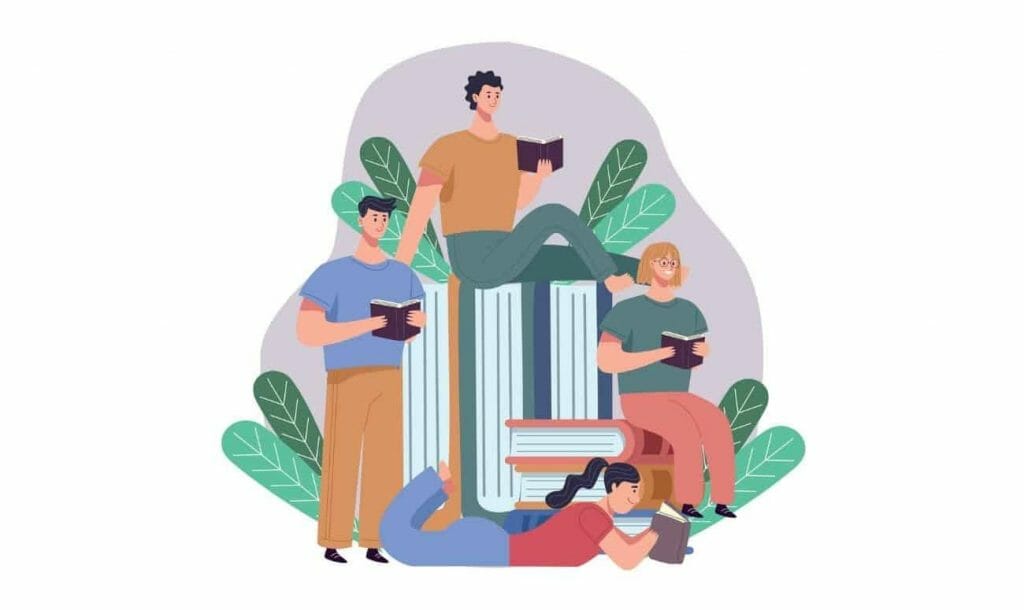If you’re someone who understands the inner pleasure of picking up a novel and flicking through those first few pages that mark the start of a literary journey, then let us tell you that you’re not alone. We believe in the magic of reading and how it serves as a wonderful escape from the ordinary and into something extraordinary. But have you ever wondered if those piles of books lying in your library are harming the planet? What about your favourite E-reader that you think is saving paper? Is that really sustainable?
Let’s take a look at the life of both and see which one comes out on top as greener.
The environmental impact of books
To understand the environmental impact of books, we need to take into account the whole life cycle of the book, from the start to the end, every phase of its existence.
Materials
If we start with the materials, book and newspaper production takes the harvesting of beyond 100 million trees and generates large and alarming amounts of water waste while also producing a sizeable carbon footprint.
Manufacturing
Manufacturing one book requires two kilowatt-hours of fossil fuels and about 7.5kgs of carbon dioxide. The production of paper for books puts old-growth forests at risk and the printing ink releases volatile organic compounds into the air that aggravate the risk of smog or asthma.
Transportation
The transportation of a book depends on how it’s been purchased. Whether bought online, which needs to be shipped by air or over land or bought at the bookstore which requires driving to the store. But to put it in perspective, trains, cars, planes or ships all require the burning of fossil fuels and so their environmental impact is major. Not to mention, almost 30% of the books are returned to the publisher, ending up adding to the waste.
Usage
Books when properly cared for have a longer lifespan compared to e-readers. You can even share your books with others or participate in a book swap. This can keep the already printed editions in rotation, reducing the need to produce additional copies.
The environmental impact of e-readers
Materials
Production of one e-reader requires the extraction of approx 14.9 Kgs of minerals, along with some toxic minerals. It also requires approximately 300 litres of water and produces a large amount of waste. They then end up dumped in landfills.
Manufacturing
The manufacturing of e-readers needs approximately 100 kilowatt-hours of fossil fuels and produces more than 30 Kgs of carbon dioxide, contributing to the effects of climate change. E-readers also require the use of toxic minerals which when emitted can worsen asthma and increase chances of premature death.
Transportation
Your new e-reader probably shipped from abroad as that’s where most consumer electronics are produced. But flying across oceans and continents means the shipping must’ve burnt a huge amount of fossil fuels. This is absolutely terrible for the planet.
Usage
Studies have proven that one year of use offsets an e-reader’s lifetime carbon footprint, provided the buyer has substituted the e-reader for the purchase of more than 40 books or more. However, if the e-reader is used for activities besides reading, like browsing the internet, checking emails or playing games, this usage results in larger electricity consumption. Even the environmental impacts of the internet, such as the servers and computers used to produce and deliver digital books requires a large amount of energy.
How can you turn your reading habit more sustainable?
Confused as to which medium is more suited for you? Well, let’s rather look at it as a way to reduce your literary carbon footprint rather than picking a side and sticking to it.
● Buy less or buy secondhand. Both books and e-readers when bought new can take a toll on the environment. Why not opt for a pre-loved option that reduces production yet serves the same purpose?
● If an e-reader is your preferred choice of mode then make sure to use it to its fullest. This way you ensure that firstly, you’re paying back the eco-debt incurred by the production of the device and secondly when it does die, you can recycle it properly by staying conscious of its environmental impacts.
● Consciously make sure to buy recycled books.
● Look for eco-conscious vendors who are actively taking measures to reduce their environmental impact.
● Be an advocate. Both Team E-reader and Team Book are affecting the environment majorly and could use a few activists like you who tell them to take accountability for their consequences.
● Go back to borrowing books from a library. With technology making us lazy and unproductive, the liberation of heading to the library and choosing your next favourite read is long forgotten. Bring the art back by subscribing to one, preferably a local one that you can easily access through foot or bike.
Read more: Saying No To Others And Yourself Will Help You Be More Productive
Like & Follow ThinkRight.me on Facebook, Instagram, Twitter, and Telegram to stay connected.































